By Amanda Wick
Archivist for the Charles Babbage Institute

Burroughs Corporation Factor Floor, circa 1900
Office dogs, nap pods, video game rooms, gym memberships, and field trips. Tech companies have long been known for their unique approach to employee benefits.
Perhaps you’ve heard of the Google complex’ gyms, open approach to bringing dogs and cats to work, or free gourmet food. Maybe you knew about Lockheed Martin’s employee club council that authorized budgets for a variety of employee interest groups — including the alleged million-dollar wine club.
Employee perks, clubs, and interest groups have always been a part of the high tech culture — in a competitive industry, having a robust set of perks and benefits is critical to drawing top talent. And, the ways in which companies treat their employees is indicative of an engaging corporate culture and management approach. But, where does this idea come from?
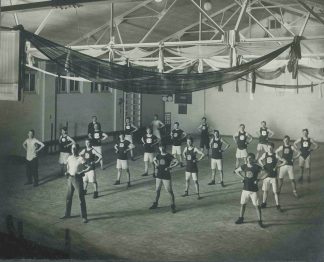
Burroughs Employee Calisthenics Club, circa 1910
It starts early in the 20th century with the heavy manufacturing companies who promoted intramural sports and interest groups as a way to promote camaraderie and employee health and wellness. Having healthy and strong employees in a highly physical work environment contributed to overall output and efficiencies, and the camaraderie built amongst the employees was merely an incidental benefit.
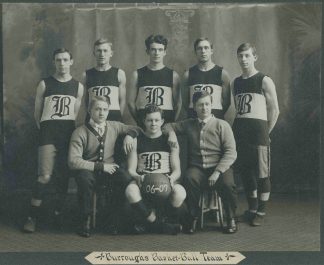
Burroughs Corporation Employee Basketball Team, circa 1907
The Burroughs Corporation employee teams represent a typical example of health-focused, employer-sponsored benefits. With its roots in manufacturing (typewriters, accounting machines, and other mechanical computing devices), the company offered employees a variety of health and wellness focused outlets — including basketball, tennis, baseball, calisthenics, and badminton. In fact, the company often fielded multiple teams from different divisions to compete with employee teams from other regional manufacturing companies. Burroughs was so invested in its employee teams that it purchased adjoining land to its main factories in Detroit and St. Louis to build ball parks, tennis courts, and field houses for employee teams.
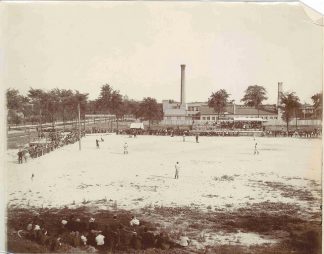
Burroughs Corporation Ball Park, circa 1915
The photographs represented here are a small sample of a very unique subset with the Burroughs Corporation records (CBI 90). They are some of the earliest, non-product photographs within the records and a majority of the photographs have employees’ last names penciled on the back. Clearly, the company took a great deal of pride in its employee teams!
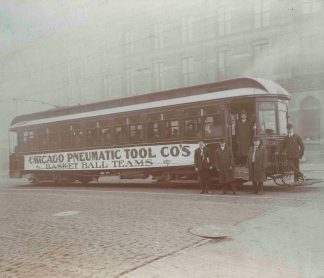
Chicago Pneumatic Tool Company Team Trolley, undated
The Control Data Corporation, another early high tech powerhouse, also supported employee interest groups. In fact, the amateur photography club (the CDC Photographic Society) became such a prominent feature of the company that it merited a significant chunk of records donated to the Charles Babbage Institute in 2004 to reunite with the rest of the Control Data Corporation records (CBI 80). The images represented here include a photograph taken by an unidentified Society member, as well as a mock-up for the member ID card. Photographs taken by members of the Society were judged in annual competitions and used in employee publications.
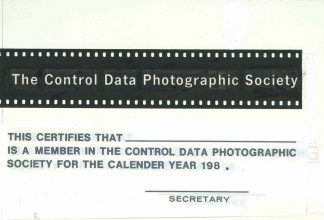
Control Data Photographic Society Membership Card, circa 1965

Control Data Corporation Photographic Society Photograph, undated




